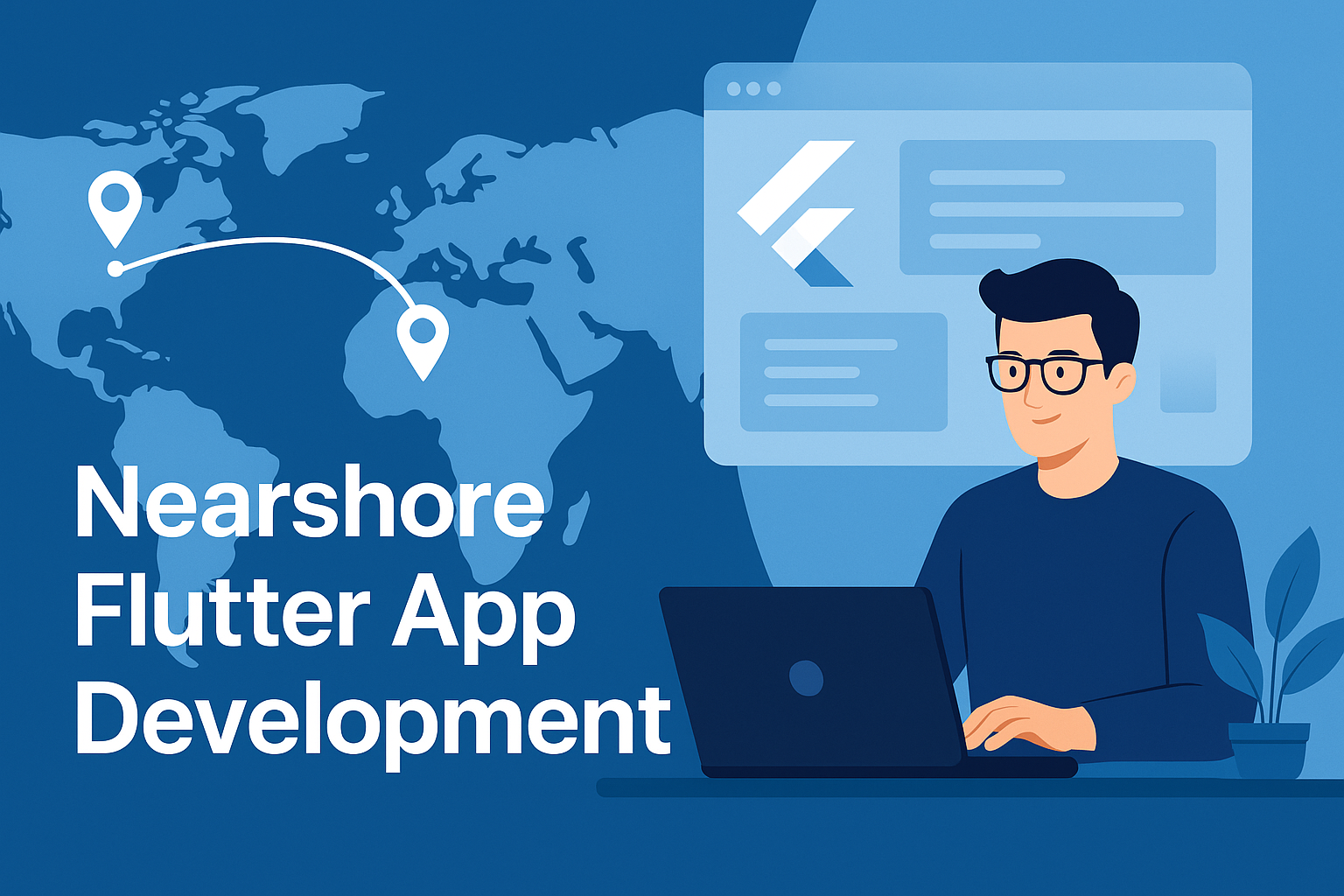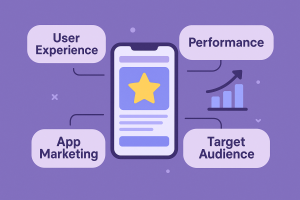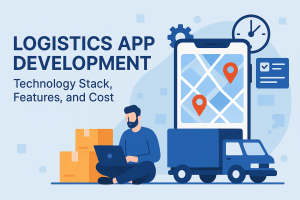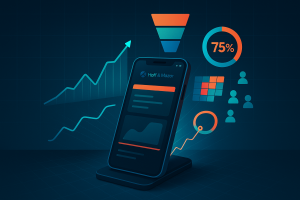As mobile app development becomes more competitive by the day, companies are under growing pressure to build smarter, ship faster, and keep costs in check. Many are rethinking how and where their apps are built to stay ahead. build a mobile app with Flutter guide, One approach that’s gaining serious traction is nearshore Flutter app development. It brings together the speed and flexibility of Flutter’s cross-platform capabilities with the practical advantages of working with nearby development teams, making it an ideal solution for businesses looking to scale without the usual outsourcing headaches.
But what exactly is nearshore Flutter app development? Why are startups, enterprises, and tech-driven firms flocking to this model? And how does it stack up when compared to traditional development routes? In this extensive guide, we’ll unpack everything you need to know—from its inherent advantages to how you can effectively implement it, especially if you’re considering whether to hire iOS app developers or expand your Flutter team through a nearshore partner.
What is Nearshore Flutter App Development?
Nearshore Flutter app development refers to outsourcing Flutter-based mobile application projects to development teams located in geographically close or time-zone-aligned countries. It’s a strategic move that allows companies to maintain real-time communication and efficient collaboration, without the cost and complexity often associated with offshore development.
Flutter, developed by Google, is a robust open-source UI toolkit for crafting high-performance applications across mobile, web, and desktop from a single codebase. When coupled with a nearshore team, the framework’s productivity and versatility are amplified, enabling businesses to accelerate their digital transformation initiatives.
Whether you’re launching a consumer-facing app or an enterprise-grade solution, working with a nearshore Flutter team ensures cultural compatibility, faster feedback loops, and synchronized workflows—key ingredients for building apps that meet user expectations and market demands.
Why Choose Flutter for App Development?
Before diving deeper into the nearshore approach, it’s crucial to understand why Flutter is the framework of choice for modern app development.
Cross-platform capabilities: Flutter allows developers to build apps for iOS, Android, web, and desktop using a single codebase, which drastically reduces development time and cost.
Beautiful and customizable UI: With Flutter’s widget-based architecture, creating expressive, branded user interfaces becomes intuitive.
Native performance: Unlike other cross-platform frameworks, Flutter compiles to native ARM code, ensuring smooth performance and fast loading times.
Vibrant developer community: Backed by Google and supported by a growing ecosystem, Flutter boasts comprehensive documentation, frequent updates, and a global talent pool.
These advantages have made Flutter a preferred framework for companies of all sizes, from startups to global enterprises, and when developed by a nearshore team, the value proposition increases significantly.
Nearshore vs. Offshore vs. Onshore: Understanding the Landscape
When considering mobile app development partnerships, businesses generally have three options: onshore, offshore, and nearshore. Here’s how nearshore stacks up against the other two:
Onshore Development
Definition: Hiring a development team within your own country.
Pros: Seamless communication, cultural alignment, legal ease.
Cons: Typically the most expensive option.
Offshore Development
Definition: Outsourcing to distant countries, often across multiple time zones.
Pros: Cost-effective, access to large talent pools.
Cons: Communication barriers, time zone differences, and potential quality issues.
Nearshore Development
Definition: Partnering with teams in neighboring or nearby countries.
Pros: Cost efficiency, overlapping working hours, minimal language/cultural barriers.
Cons: Slightly higher cost than offshore but often better value for money.
For teams already using Flutter or planning to migrate, nearshore development represents the ideal middle ground—balancing quality, budget, and speed. In this context, companies may also explore whether to hire iOS app developers for platform-specific optimization or keep a unified Flutter approach.
Key Benefits of Nearshore Flutter App Development
1. Enhanced Communication and Real-Time Collaboration
One of the greatest advantages of nearshore development is time zone compatibility. When your development team works in a similar or identical time zone, meetings, feedback sessions, and agile sprints are easier to schedule and conduct.
Whether you’re a startup founder needing daily check-ins or a product manager overseeing sprint planning, this synchronous communication improves productivity and project visibility. Flutter development thrives on collaboration—UI tweaks, animations, and platform testing often require real-time input, and a nearshore team ensures that these iterations happen without delay.
2. Cost-Effective Without Compromising Quality
While not as cheap as offshore options, nearshore development still provides significant cost savings compared to onshore hiring. Lower labor costs in countries like Mexico, Colombia, Argentina, or Eastern European nations make high-quality Flutter development more accessible to businesses operating on tight budgets.
In this cost-performance equation, nearshore teams often deliver superior quality compared to offshore vendors due to better alignment in business practices, user expectations, and compliance standards. You don’t sacrifice quality for savings—you optimize both.
3. Access to Skilled Flutter Developers
Flutter is experiencing explosive growth worldwide, and many nearshore markets are producing top-tier Flutter engineers who bring both technical acumen and creative problem-solving to the table. Countries such as Brazil, Poland, and Costa Rica have invested heavily in tech education and are now hubs for highly skilled developers with expertise in modern frameworks like Flutter.
Additionally, if you need to hire iOS app developers for parts of your application that require native iOS performance or Apple ecosystem integrations, many nearshore providers also offer iOS-specific experts, giving you flexibility and scalability within the same engagement model.
4. Agile Development and Faster Time-to-Market
Flutter’s speed advantage is well-documented, and with a nearshore team, this speed is amplified by agile methodologies and continuous delivery pipelines. Nearshore teams are adept at adapting to agile workflows, iterative sprints, and real-time feedback, ensuring your app hits the market faster and with fewer hiccups.
This faster time-to-market is crucial in today’s competitive app economy, where the first mover often has the edge. Whether you’re targeting mobile consumers or enterprise users, a nearshore Flutter team keeps your project moving at a pace that’s both sustainable and responsive.
Best Practices for a Successful Nearshore Flutter Development Project
1. Define Clear Project Objectives and KPIs
The foundation of any successful development project lies in clarity. Before you engage with a nearshore partner, define your project scope, user goals, technical requirements, and key performance indicators (KPIs). This clarity will help your nearshore team align efforts with expectations, reducing ambiguity and rework.
2. Choose the Right Nearshore Partner
Not all vendors are created equal. Look for a nearshore Flutter app development team that has:
A proven track record with Flutter projects.
Strong UI/UX capabilities.
Experience working with Western clients.
Fluent English communication.
Time zone compatibility.
Conduct interviews, review portfolios, and ask about their hiring practices and onboarding processes. A strong cultural and technical fit will directly influence your project’s success.
3. Invest in Communication Infrastructure
Even when working with nearby teams, miscommunication can derail progress. Use tools like Slack, Jira, Trello, Figma, and Zoom to create a transparent communication channel and agile task tracking. Set clear milestones and conduct weekly demos to ensure everyone stays on the same page.
4. Maintain Code Quality and Version Control
Ensure that your nearshore team follows best practices for clean, maintainable code. Use GitHub or Bitbucket repositories, enforce code reviews, and implement CI/CD pipelines for automated testing and deployment. Flutter’s rapid prototyping capabilities should not come at the expense of scalable architecture and long-term maintainability.
5. Blend Native and Cross-Platform Wisely
Flutter is powerful, but sometimes native development is required—especially if you’re integrating complex iOS-specific features. In these cases, knowing when to hire iOS app developers for specialized work will elevate the performance of your app. The right nearshore partner will help you balance native and cross-platform logic intelligently.
Industries Benefiting from Nearshore Flutter Development
Nearshore Flutter app development isn’t limited to one niche. Its versatility makes it a powerful choice for various sectors:
eCommerce: Build mobile stores quickly with Flutter’s rich UI capabilities.
FinTech: Deliver secure, high-performance apps that handle real-time transactions.
Healthcare: Build patient portals, booking apps, and medical record platforms.
Education: Launch engaging eLearning platforms and student apps with minimal overhead.
Travel & Hospitality: Craft immersive booking and travel companion apps.
In each of these industries, the benefits of real-time collaboration, lower development costs, and faster iteration cycles make nearshore Flutter teams an invaluable asset.
Future Outlook: Is Nearshore Flutter the New Standard?
With the rising demand for scalable mobile apps and the increasing talent shortage in high-cost regions, nearshore Flutter development is poised to become a standard operating model. As more companies prioritize agility, innovation, and cost-efficiency, nearshoring offers a strategic advantage.
Moreover, with Flutter continuing to evolve—adding better support for desktop, embedded systems, and even foldable devices—the framework’s role in app ecosystems will only expand. Partnering with nearshore teams ensures that businesses remain ahead of the curve without overextending their resources.
And when combined with the option to hire iOS app developers for precision tuning or hybrid integrations, the development process becomes both flexible and future-ready.
Conclusion: Is Nearshore Flutter App Development Right for You?
Nearshore Flutter app development isn’t just a trend—it’s a strategic evolution of how modern software teams build and ship world-class mobile apps. With benefits spanning faster delivery, cost savings, cultural alignment, and access to top talent, this model empowers businesses to compete effectively in a crowded marketplace.
Whether you’re building an MVP, scaling a SaaS platform, or expanding an enterprise solution, working with a reliable nearshore partner can dramatically accelerate your success.
If your roadmap includes mobile innovation, now is the time to explore nearshore Flutter development—and if the need arises, don’t hesitate to hire iOS app developers to complement your cross-platform team. Together, these choices form a winning strategy for resilient, future-ready product development.







